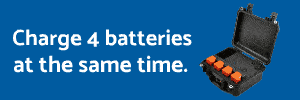I was flying my XSP in a legal area, 1/8 mile off the coast 10 miles south of Half Moon Bay, CA. Windy, low overcast, rough, loud ocean. I was on a protruding cliff, facing south, my back faced north. I was watching my XSP at 250-300’ fly back to me from about 1/2 mile south. Out of nowhere, a Robinson 2 seater helicopter comes flying along the coast from the north at about 300-400’. He sees my XSP and freaks, zoomed-up, then circled around to look for the perp (me). I came down fast, hit RTH. He kept circling as I got madder. I landed. He circled. I finally flipped him off and motioned him to land and discuss the situation, LOL. I knew he wouldn’t/couldn’t, but damn I was pissed. He was hot-rodding low down the coastal cliffs showing off for his girlfriend.
Isn’t this a lose/lose for the drone pilot? There’s no ground-based radar in the area, the FAA only responds to “tail numbers” when you complain. Trying reading one on a flying private plane or helicopter. I did have 2 witnesses if I needed them, but I know from fighting helicopters in Hawaii, they can do almost anything, legally, if they aren’t “endangering people or property”...
If anything happened, who would be blamed?
Isn’t this a lose/lose for the drone pilot? There’s no ground-based radar in the area, the FAA only responds to “tail numbers” when you complain. Trying reading one on a flying private plane or helicopter. I did have 2 witnesses if I needed them, but I know from fighting helicopters in Hawaii, they can do almost anything, legally, if they aren’t “endangering people or property”...
If anything happened, who would be blamed?
Last edited:






